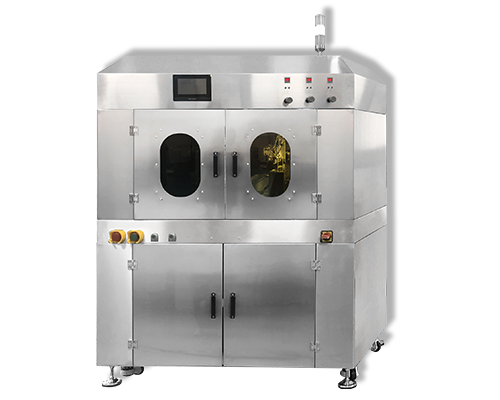Surface Antibacterial Functional Coating
In recent years, with the frequent use of biomedical materials, the problem of iatrogenic infection caused by pathogenic bacteria adhering to the surface of medical devices or implant biomaterials has become one of the biggest hidden dangers to the health of patients worldwide, seriously endangering Social public health security. Therefore, designing an effective method to construct a surface coating with antibacterial function has important practical significance for the functional realization and application of functional materials, especially biomedical materials.
According to the mechanism of action, antibacterial coatings are mainly divided into:
Contact Antimicrobial Coating
Anti-stick antimicrobial coating
Intelligent antibacterial coating, etc.
1. Contact antibacterial coating
Contact antibacterial coatings are the earliest researched antibacterial coatings. It directly immobilizes organic molecules with antibacterial function to the surface of the material. Based on the intermolecular interaction, when bacteria or fungi contact the material, the surface antibacterial molecules adopt a chemical mechanism to kill the bacteria.
For example: fix some inorganic antibacterial materials (such as nano-silver, nano-metal oxide, nano-gold, graphene oxide, etc.) Kill germs on contact materials.
Advantage:
Safe and efficient.
Insufficient:
Most of the physical mechanisms to kill germs require certain excitation conditions and consume energy.
Bacterial dead bodies are easy to accumulate on the surface of the material and affect the continuous performance of the antibacterial performance of the coating.
2. Anti-adhesion antibacterial coating
Anti-adhesion antibacterial coatings can be divided into anti-adhesion antibacterial coatings and anti-adhesion antibacterial coatings.
Anti-adhesion and antibacterial coatings are functional coatings that are constructed on the surface of materials to resist the adhesion of biomolecules such as bacteria, fungi, and proteins. The antibacterial coating does not use traditional bactericides or antibiotics, and directly modifies the surface of the material to change the surface physical and chemical properties of the material such as roughness, hydrophilicity, chargeability, conductivity, etc., thereby inhibiting the adhesion and aggregation of bacteria.
Anti-adhesive bactericidal coating refers to a functional coating that simultaneously resists the adhesion of biomolecules such as bacteria, fungi, and proteins and exposes or continuously releases bactericidal components, and has dual functions of bacteriostasis and sterilization. This type of coating generally loads the antibacterial agent directly into the anti-adhesion coating of various materials through physical chelation or chemical bonding. The antibacterial agent stays in the pores of the coating or the polymer layer by physical adsorption, and releases slowly or responsively to exert antibacterial effect.
Insufficient:
The immobilization of antibacterial agents by physical adsorption is very likely to cause the problem of “burst release” in the early stage and slow release in a small amount in the later stage. It is difficult to achieve the controllable release of antibacterial agents and the long-term prevention of infection. Certain antimicrobials have issues of instability, potential toxicity, and drug resistance. However, if the antibacterial agent is fixed on the surface of the material in the form of covalent bonds, although it can continue to exert a strong antibacterial effect locally, the covalent connection is likely to change the antibacterial performance of the antibacterial drug.
3. Intelligent antibacterial coating
In view of the above problems of contact antibacterial coatings and anti-adhesion antibacterial (bacteriostatic and bactericidal) coatings, researchers have developed new smart antibacterial coatings in recent years.
The intelligent antibacterial coating realizes the controllable antibacterial process, maintains “biological inertness” when there is no bacterial contact, and can “activate” the bactericidal function during the bacterial adhesion period to release antibacterial agents, and can be realized by adjusting the intermolecular interaction and intelligent responsiveness Controlled release of antimicrobial agents. In this way, problems such as environmental pollution and health hazards caused by the irregular loss of a large amount of toxic components such as heavy metals and antibiotics are avoided.
Advantage:
The intelligent antibacterial coating can remove the dead bacteria and debris remaining on the surface in time after killing bacteria through the intelligent responsiveness of the coating molecules (temperature, pH, light, magnetism, etc.) to maintain the long-term antibacterial function of the coating. In addition, smart antibacterial coatings often have a variety of bactericidal mechanisms, forming a synergistic effect to improve bactericidal efficiency and reduce bacterial resistance, so as to effectively kill “super bacteria”.
Insufficient:
At present, intelligent antibacterial coatings are mainly based on physical and chemical trigger mechanisms. In the process of realizing coating functions, auxiliary equipment or other methods are needed to effectively release antibacterial substances to achieve antibacterial effects, and the overall flexibility is relatively low.
To sum up, constructing antibacterial coatings on the surface of biomedical materials with appropriate surface modification methods is an effective way to solve the problem of iatrogenic infections. It is an urgent problem to be solved in the future to develop a long-lasting and stable antibacterial coating with excellent broad-spectrum and high-efficiency antibacterial properties, non-toxic, harmless, non-polluting, no drug resistance, and a universal surface antibacterial coating construction method.
The UAM7000 is a guide wire coating system designed to coat guide wire up to 300 mm in length. A rotating cassette fixture holds one catheter up to 2 meters in length.
The guide wire cassette assembly can be removed for coating other medical devices, making the UAM7000 a flexible R&D development system for a variety of medical device coatings.
Chinese Website: Cheersonic Provides Professional Coating Solutions


